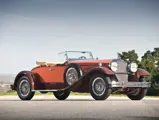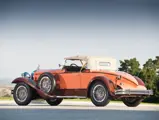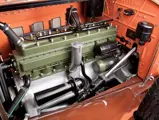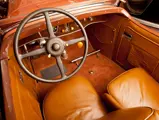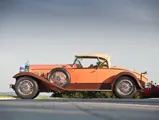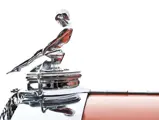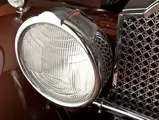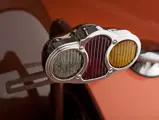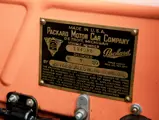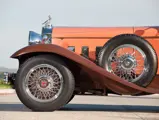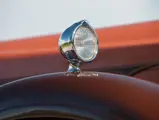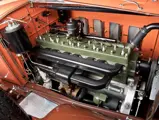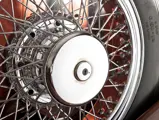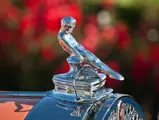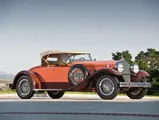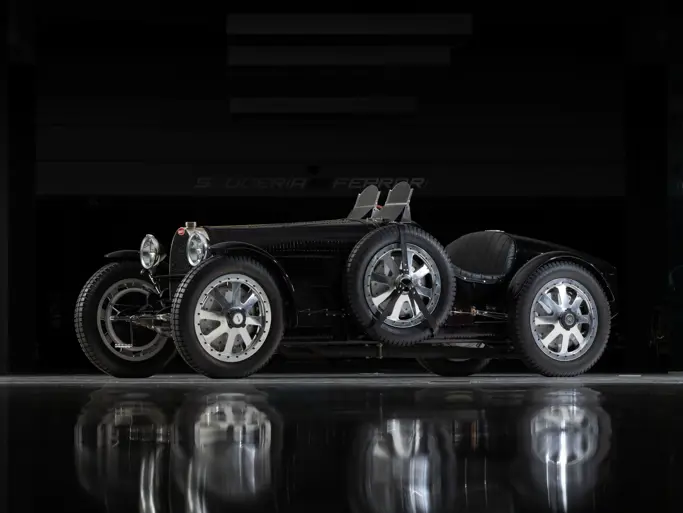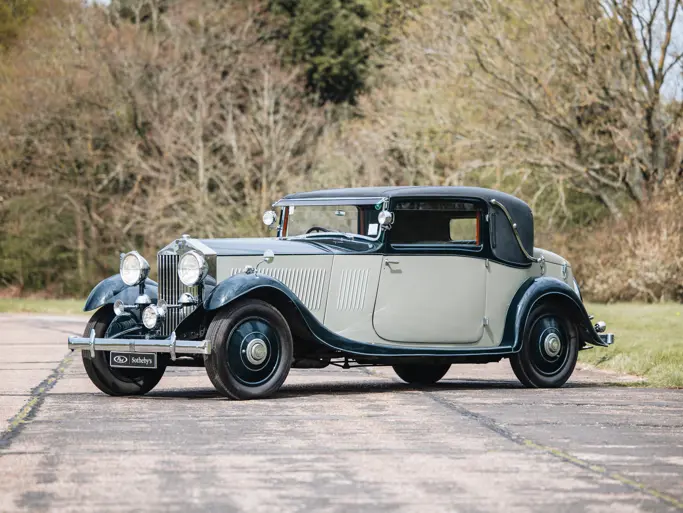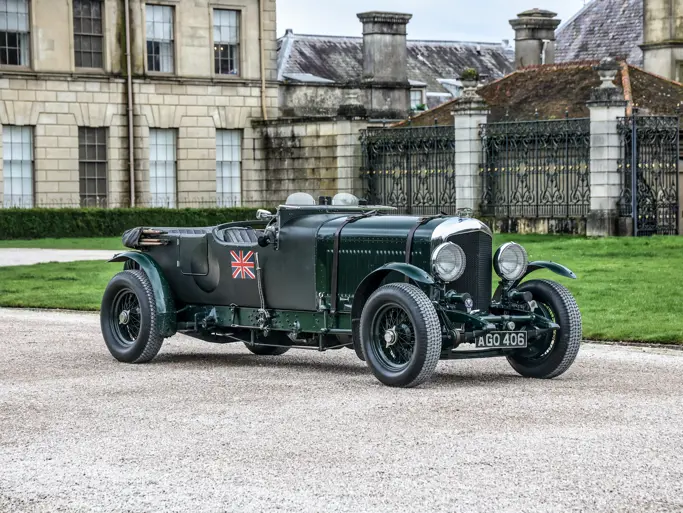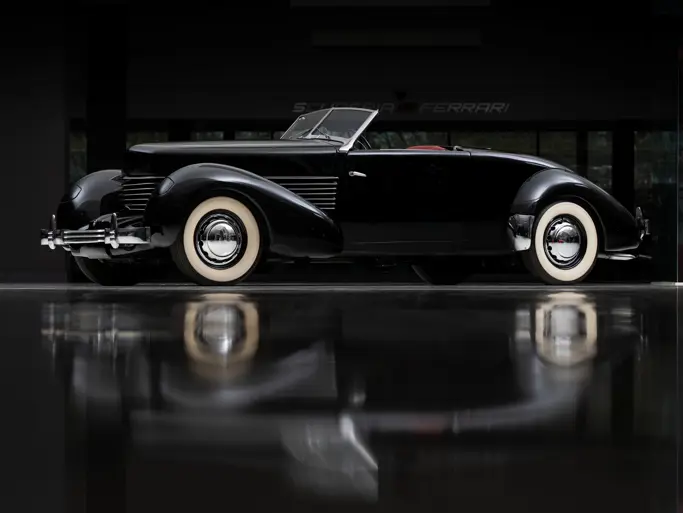Monterey 2011
1930 Packard 734 Speedster Boattail Runabout
Lyon Family Collection
{{lr.item.text}}
$506,000 USD | Sold
 | Monterey, California
| Monterey, California
{{internetCurrentBid}}
{{internetTimeLeft}}

145 hp 384 cu. in. L-head eight with Detroit Lubricator dual-throat carburetor and high-compression head, four-speed manual transmission, front and rear semi-elliptic leaf springs, four-wheel mechanical brakes with finned drums. Wheelbase: 134.5"
- Offered from the Lyon Family Collection; Ex-Harrah Collection
- An authentic, original 734 Boattail Runabout
- One of the limited few authentic Speedster Boattail Runabouts known to exist
- Only two owners in the last half-century
One of the motor cars on the short list of any serious collector is the 1930 Packard 734 Runabout. Since its inception, Packard built its reputation for manufacturing a superior automobile which employed the finest craftsmanship and engineering available at the time. Like most manufacturers, Packard participated in racing, but aside from its earliest days when it offered street versions of its racing cars, the models available to the general public were generally more reserved. That is, until, the introduction of the 626 Speedster in 1929 and the 734 Speedster the following year.
Vice President of Engineering and father of the Twin Six Colonel Jesse Vincent convinced the management of Packard that the firm needed to shrug off some of its reputation of restrained elegance and attempt to tap the performance market being courted by the Cadillac V-16. The top brass approved the initiative, and Vincent quickly went to work employing every ounce of his engineering might to squeeze horsepower out of the venerable Packard eight.
The backbone of the 734 was the Standard Eight 733 chassis which was boxed for rigidity. The engine was modified extensively with the use of a Detroit Lubricator dual-throat carburetor in addition to alteration of the inlet and exhaust ports from squared port on a vertical plane to a more practical hemispherical port set at a 45-degree angle. This maximized the larger manifold openings and separated the exhaust and inlet manifolds, resulting in a larger capacity, better flowing exhaust system. Of course, exhaust vented even more freely when the foot-operated cut-out was engaged. Buyers of the 734 were offered, at no additional cost, a higher compression head with a compression ratio of 6:1 which produced 145 horsepower. It is difficult to imagine any 734 buyer not opting for this free performance upgrade. In fact, RM specialists have verified that chassis 184088 is still equipped with the high compression head. The exhaust manifold was finned, as were the special forged iron brake drums which allowed for a two-inch wide braking surface. Rear-end gears could be chosen in 4.11:1 or 4.27:1 ratios for a top speed of over 100 miles per hour in top gear.
In a world full of gimmicks, it is ironic to consider that the 734 was made of pure substance and that almost no marketing, except for a single eight-page brochure, was used to inform potential buyers. It is quite possible Packard knew they had a “halo car” before the term was invented and intended to generate an air of exclusivity by quietly offering it to clients “in the know.” Another plausible explanation is that the management, understanding their reputation as a purveyor of proper motor cars for high society, was afraid of alienating its shrunken pool of elite clientele with the brash new model.
Packard offered the 734 Speedster with five different body styles. The Rumbleseat Runabout, Phaeton and Boattail Runabout were priced at $5,200, while the Victoria and Sedan were an even $6,000. The passenger seat is set back from the driver’s seat, indicative that the operator may need a little extra elbow room for spirited driving. Surely due to a lack of marketing rather than the considerable price, production was only 113 units for all body styles. Early collectors recognized the 734 as superlative in the 1940s, and Smith Hempstone Oliver created the 734 registry in the 1950s.
This example, chassis 184088, was delivered new to a Mrs. Sealey from Portland, Oregon. The original firewall data plate confirms this original delivery with a stated delivery date of 7-7-30 by Service & Sales, Inc. Portland, Oregon. The car was acquired by William Harrah in 1960, and it became part of his famous, world-class collection of motor cars. The car’s file does include memos regarding the proper tuning of the engine which imply that Mr. Harrah was personally involved with getting the car sorted. For a man who had as many as 1,800 cars, the personal attention given this car says a lot about its stature within his collection. RM has verified that the complete restoration file is intact at the National Automobile Museum library, which maintains all of the Harrah library holdings, and that copies of all documentation can be made available by the library.
Since General Lyon’s 1986 acquisition of this 1930 Packard 734 Speedster, it has been exceptionally well maintained by two full-time mechanics in the Lyon Collection. In fact, the General has always regarded this example as a car for the true enthusiast and has enjoyed driving it immensely. It is finished in a period-correct color scheme of Salmon with Chocolate Brown belt moldings, fenders and underside, which is uncommon today and exceptionally pleasing. The interior is finished with Light Brown leather with Burnt Orange carpeting and a Tan Haartz cloth top. Additional equipment includes chrome wire wheels wearing sharp blackwall tires, dual side-mounted spare tires, radiator stone guard, wind wings and a "Daphne at the Well" radiator mascot. With sleek styling, rarity and performance, this 1930 Packard 734 Speedster Boattail Runabout will be the proud acquisition of the most discerning collector. Authentic examples become available only once or twice a decade, therefore we suggest careful consideration prior to its arrival on the block.

